Snipe Worlds 2015: How I Learned to Stop Struggling and Add Some Rake
By Carol Cronin 33rd overall? Doesn’t sound very impressive. Four years ago, Kim Couranz and I sure weren’t crowing about that finish at the 2011 Snipe Worlds. So why are we so proud of finishing in exactly the same spot at the same regatta this year? Because it actually shows we’ve gotten better. First off, there were only 59 boats at the 2011 Worlds and 83 at the 2015 event. Statistically, 33/83 is much better than 33/59—and I would argue that our progress has been even more significant than those numbers would indicate. ...
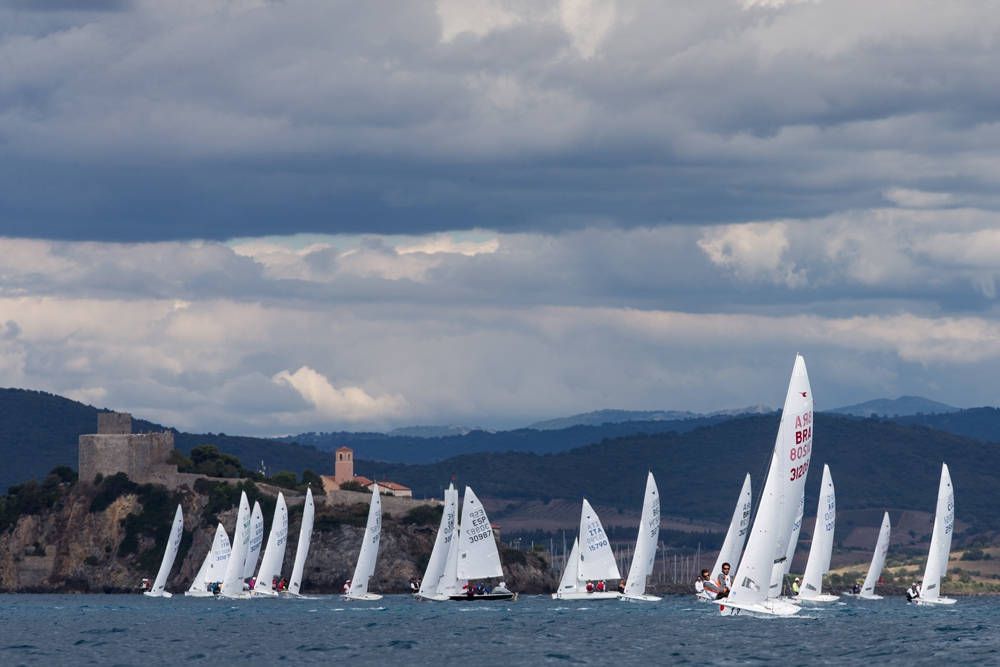

By Carol Cronin
33rd overall? Doesn’t sound very impressive. Four years ago, Kim Couranz and I sure weren’t crowing about that finish at the 2011 Snipe Worlds. So why are we so proud of finishing in exactly the same spot at the same regatta this year? Because it actually shows we’ve gotten better.
First off, there were only 59 boats at the 2011 Worlds and 83 at the 2015 event. Statistically, 33/83 is much better than 33/59—and I would argue that our progress has been even more significant than those numbers would indicate.
…
There’s a reason for the record attendance at this year’s Worlds: it’s called “Italy.” Who could resist the lure of sailing on “Snipe Bay,” overlooked by the walled town of Talamone, which is just west and a bit south of the famous island of Elba? The conditions varied, but the warm air and clear blue water welcomed us every day.
Most of the racing took place in 12-18 knots, and with 83 Snipes churning up the Bay, even in the rare light air races there was always a new wave to get through. It was, as world championships should be, a very challenging week of sailing—especially at our combined team weight of 280 pounds.
Competing with the top group would have required more preparation than Kim and I would or could fit into our daily lives, which include jobs, husbands, and mortgages. (Never mind that size thing, which no amount of eating or weightlifting was likely to improve.) And we like sailing together too much to find other teammates. Getting ready for Talamone meant minimizing our limitations, which meant learning to sail better in breeze.
We started by asking more detailed questions of the top US sailors. Everyone was very generous with information, but we couldn’t just copy from other regular-sized teams; we had to come up with our own system. We also wanted to settle into one set of sails and one spreader setting, for all conditions, if only so I would sleep better during regattas (rather than worrying about the forecast, and where we could find a staircase or porch or something to climb on, in order to adjust the spreaders before we left the dock the next day).
This past year we settled on the Quantum C5 main and Y4 jib, which both have great range and good speed across all conditions. We also locked our spreaders at “medium”: 16.5” x 29”. And at last winter’s regattas in Miami, we were lucky enough to work with Team Canada during their push toward the Pan Am Games qualifier. Coach Thomas Fogh identified a couple of areas for improvement that would’ve taken us years to figure out on our own.
The Snipe is a crew-driven boat, and the more adjustments Kim took over, the faster we went; when we totaled it up at the Worlds, she had 14 of our 15 possible controls! (I’m NOT giving up the mainsheet.) The Snipe has so many lines to pull, and they all interact with each other but have a slightly different effect; no wonder it takes so long to figure out how to sail this boat well.
Meanwhile our time in the boat and a focused approach to events and practice began to add up. This is our fifth year of sailing Snipes together, and we can practically read each other’s minds—at least at a mark rounding or on the starting line.
But we were still struggling as soon as the waves and wind built above junior grade. Fortunately, all the pieces were now in place for a significant step forward—which happened after day two of the Worlds. We’d posted a 4th in the first race of the day—the lightest and flattest racing we’d see all week. And then as soon as the wind and waves built again, we couldn’t hang with the top group. I felt like the boat was hard to sail, hobbyhorsing instead of going forward—a sure sign we weren’t going well. Our finish in the 50s confirmed it.
Fortunately once we got off the water we had all the tools we needed to identify the problem—thanks again to Thomas Fogh, who as the US team coach had spent his day scurrying around, trying to get information and water and spare gear to all nine US boats in time for the next race. Somehow he’d found the time to take photos of various boats as well, so over dinner we had a Merlot-fueled tuning discussion. Thanks to the photos, it was easy to compare our setup with the guys who were going well in the same conditions. Once we reinforced what we were seeing with some texted input from Snipe tuning guru Peter Commette, who has tried every possible boat set up at least twice, we realized we needed to try dropping our rake back a half inch. And to reduce the variables, we’d keep our tension the same by tightening an extra turn on the shrouds compared to our “usual” setting.
Now a half inch doesn’t sound like much, but as soon as we tested it the next day, if felt like a mile. The boat was, once again, easy to sail—and it was going forward, not just bobbing up and down over each wave. For the first time ever, we were ready to race in breeze. Bring it on!
But sailing fast wasn’t the only thing required to post finishes worthy of our speed. We still needed to get off the starting line clean, and that remained a challenge: with 83 boats all vying for position, a line that was a bit boat-favored, and a fleet that wanted to go right, we frequently found ourselves spat out the back, gasping for clean air. In the first race of the day, we climbed back to 26th—something that would not have been possible the day before with our old settings. In the second, we climbed back a bit by mid-race… and then made some major mistakes toward the end that led to our worst finish of the regatta. Still, we sailed back to the dock knowing that we had all the pieces in hand at last—we just had to put them together.
And now that we were finally ready to go, halfway through the week, the conditions deteriorated. A northeast gradient breeze arrived that was funneled around the coastal hills, vying with the “normal” westerly seabreeze for dominance. Huge shifts and lulls left the race committee struggling to set a course worthy of a world championship. Over the next two days, we spent 16 hours on the water but only got in two more races. Our finishes: 17, 11. So except for our brain fade in race six, all our results since we’d made the rake change were in the top 25 percent of the fleet.
Looking back, it’s easy to see how many pieces have to be in place to post consistently good finishes at a regatta like this. First you have to perfect your equipment and be fast in a wide range of conditions. Then you have to start and race well. And then you need a little luck—to avoid the boat that just capsized in front of you, or to take advantage of an unexpected shift that mixes up the finishes in a close pack of boats. Over the course of the series, we made big progress in the first two—and that made it easier to take advantage of the lucky breaks that later fell our way.
Finally, the biggest sign of our progress since 2011 was very obvious to me but is impossible to quantify: we’ve earned the respect of our competitors. Once we proved we could stay with the top group if we managed to get there, I began to have different conversations before and after sailing—about tactics and starting and what I thought of the new boat, rather than about where we were going for dinner or what WAMIT meant or how female sailors are perceived in the US. Yes, we were apparently referred to as the “chicas” by some of the local spectators, but (as Google just informed me) that can also mean “small”. J
We were small. And the only all-female team. But unlike 2011, I didn’t feel hampered by either; I felt like we were competing on a level playing field, able to make our smart moves show—as well as those dumb ones in race six.
And that will inspire me to continue sailing this quirky boat with my best super-crew Kim, for as long as she’ll put up with me.
Comments for this post are closed


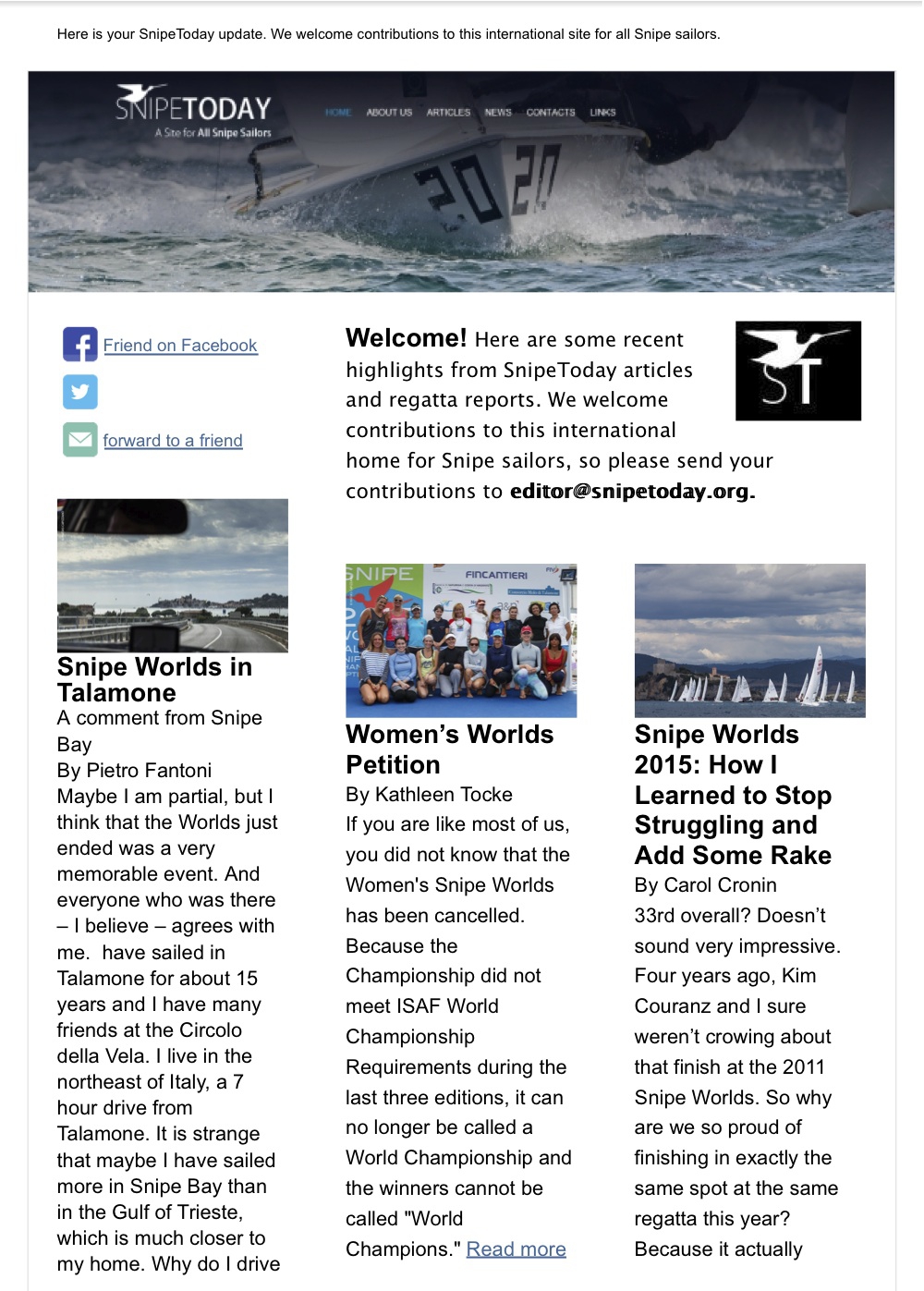

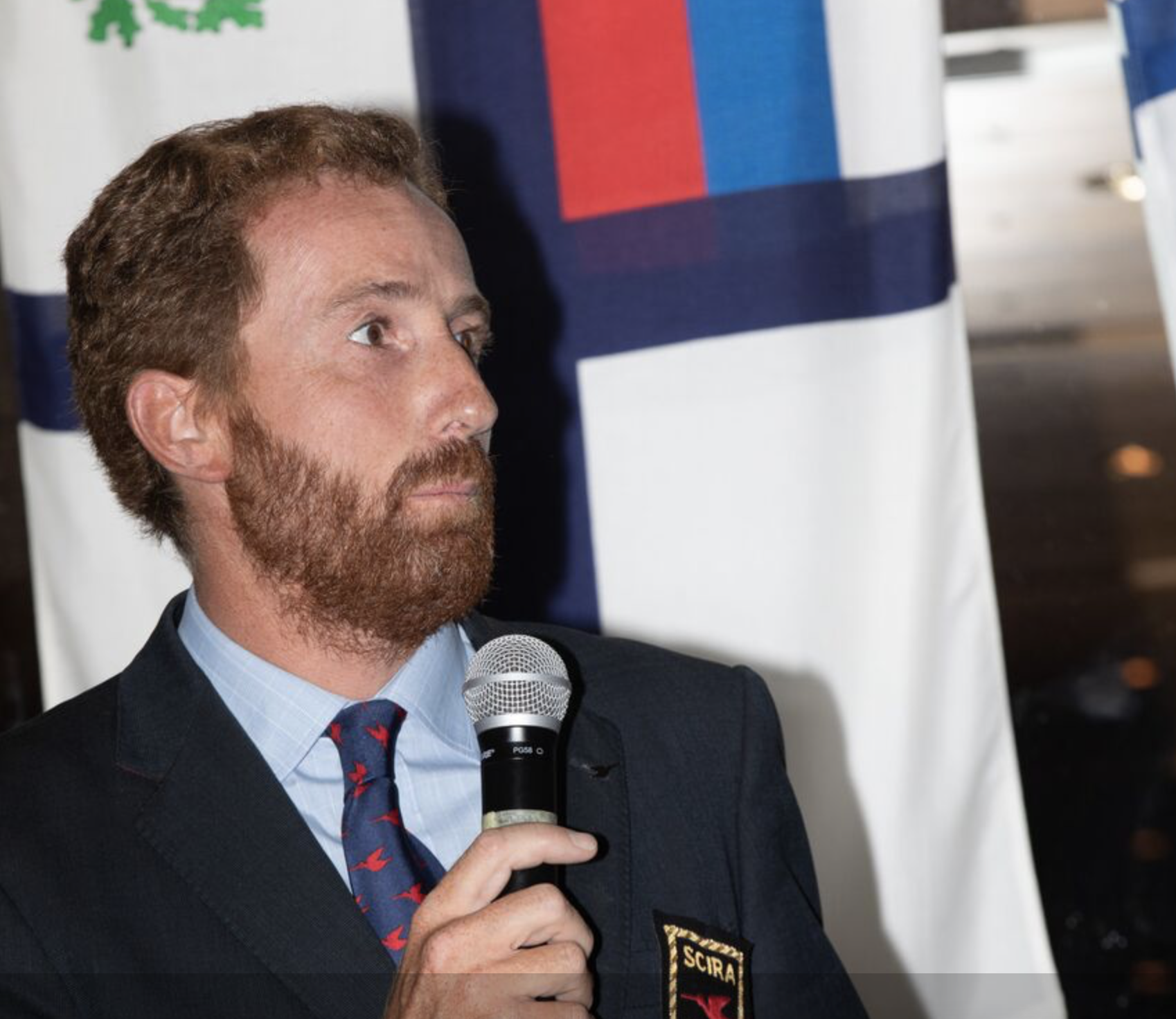
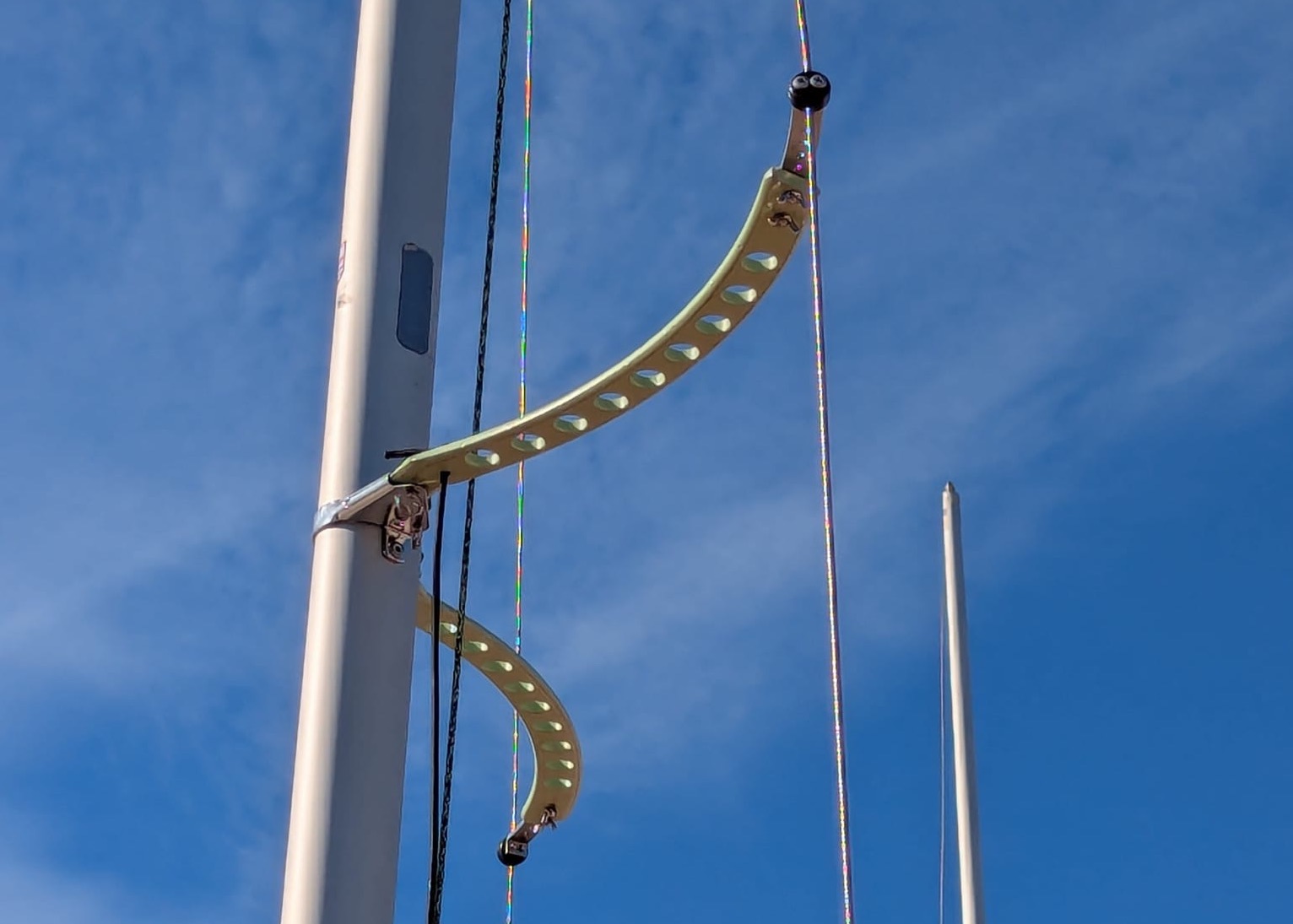
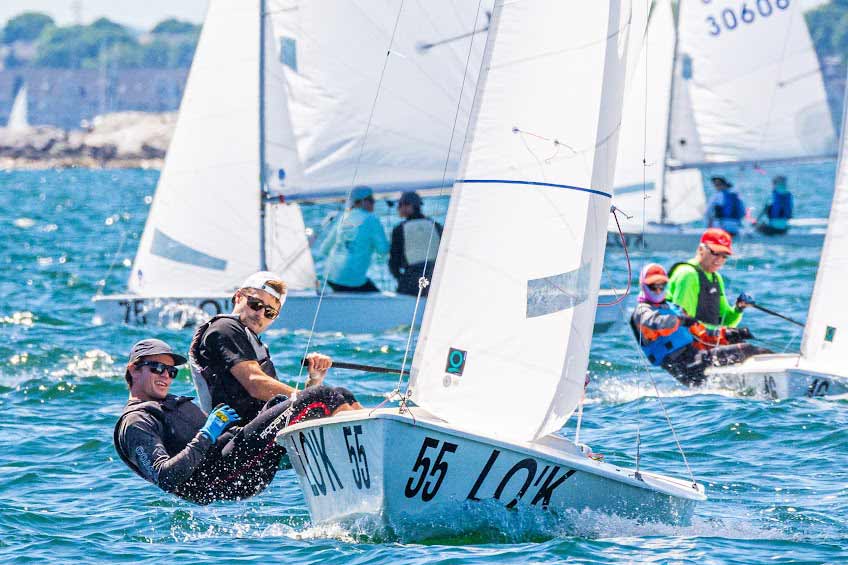
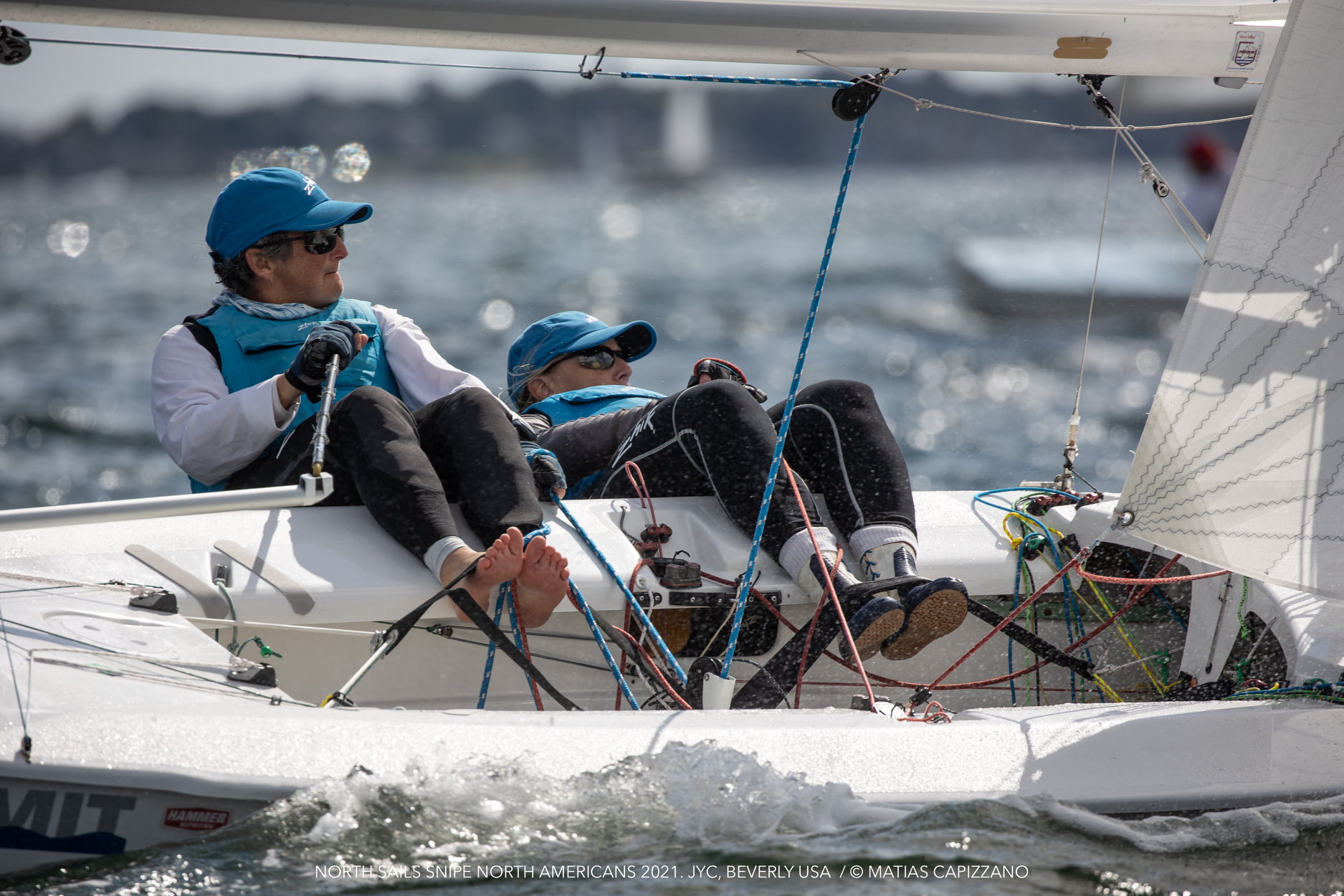
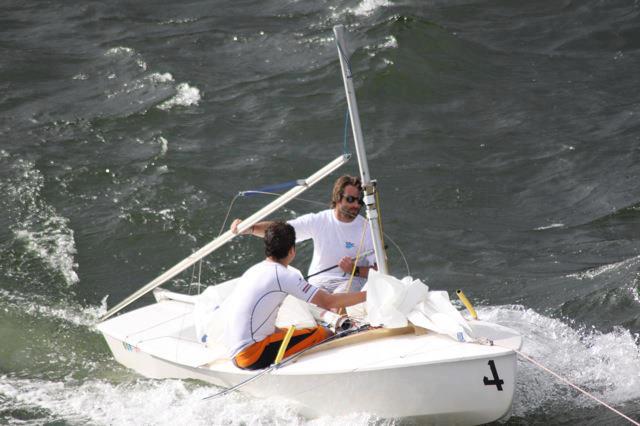

2 comments
Todd Johnson
Insightful musings, Carol. I sailed 505's off and on for more than 30 years and can tell you that the most significant of the many changes to the boat was in the mid-1970's when we all learned that rake pays as the breeze comes on. It's not exactly the same in the Snipe since the power to weight ratio overall is so much higher in the 505 than in the Snipe but, once we learned how to increase rake (and in the class today the variance is more than 1'), as the breeze came on it was possible to get the boat to plane upwind consistently. I believe the key to your success at the worlds in higher wind speeds is that you increased shroud tension as you increased rake. Without doing so, simply increasing rake might have had all sorts of strange/other consequences. To me, this argues for allowing shroud adjustment when racing. I believe it would result in lighter teams being competitive over a wider range of conditions.
Leave a reply
Your email address will not be published. Your comment will be revised by the site if needed.
Peter Devlin
Watching the races online, it was obvious that you had changed something substantially by race 5. Thanks for an interesting and very informative essay.
Leave a reply
Your email address will not be published. Your comment will be revised by the site if needed.